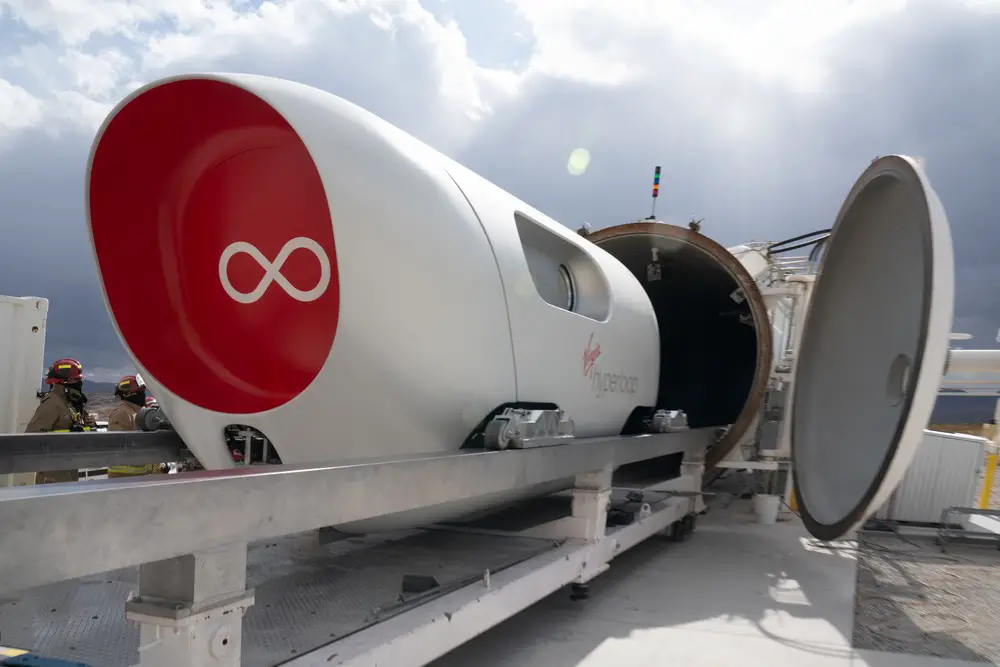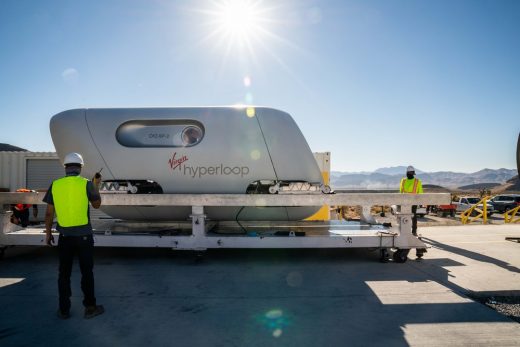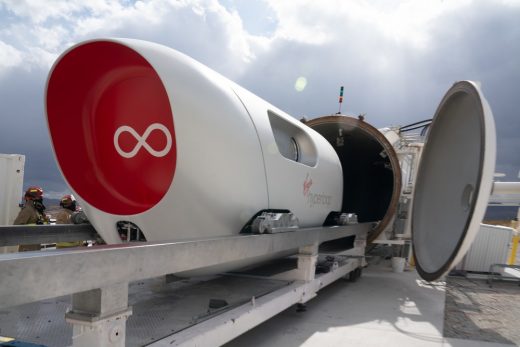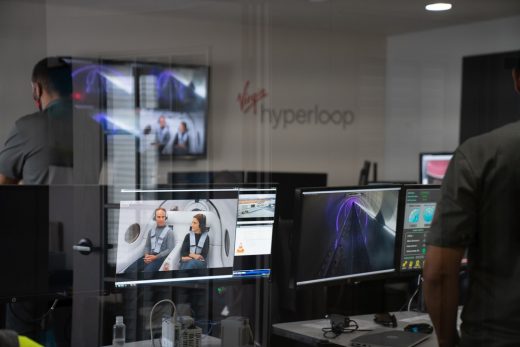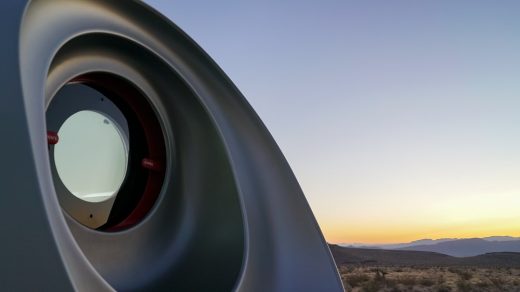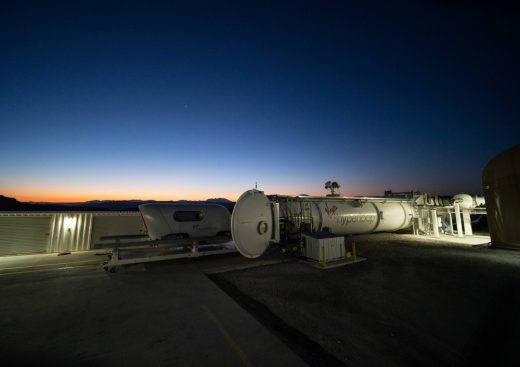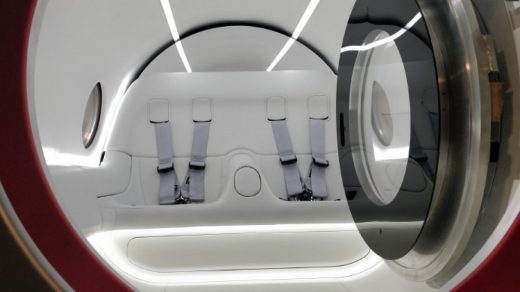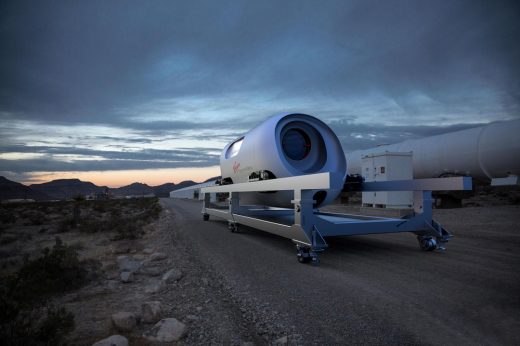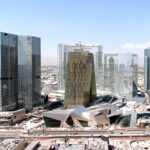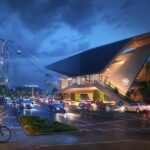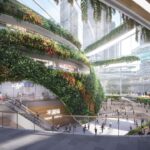Virgin Hyperloop Pegasus Nevada, Pod by BIG-Bjarke Ingels Group + Kilo Design, US Architecture
Virgin Hyperloop Pegasus Pod in Nevada
Nov 10, 2020
Attention Passengers: Now Boarding The Future Of Transportation On Hyperloop’s Pegasus
Virgin Hyperloop Trials First Passenger Ride In Big And Kilo-designed Pegasus Pod
Images Courtesy of Virgin Hyperloop
Virgin Hyperloop Pegasus in Nevada, USA
November 10th, 2020 – Designed by BIG Architects and Kilo Design, Virgin Hyperloop’s Pegasus pod makes history in the Nevada desert as it successfully carries its first passengers in the newest form of travel in over a century.
Virgin Hyperloop has partnered with BIG and Kilo to design Pegasus, or ‘XP-2’, a new vehicle typology for an autonomous transportation system to achieve hyperloop travel at the speed of over 1,000km/hour, the fastest form of land-based travel. After over a year of close collaboration, the first passengers trial this new form of transportation at Virgin Hyperloop’s 500m DevLoop test site in Las Vegas, where the company has previously run over 400 tests in un-occupied pods. The demonstration was overseen by the industry-recognized Independent Safety Assessor (ISA) Certifier, and its success marks a historic moment in transportation as Pegasus becomes the first manned and fully functional system for Hyperloop travel.
“When we started in a garage over 6 years ago, it felt like a distant dream to one day ride in a Hyperloop pod. Today, that dream came true – and not only for me, but for a whole generation who now has a moonshot to look towards right here on Earth. Together with BIG and Kilo, we have worked on a seamless experience that starts the moment you think about being somewhere – not going somewhere. We don’t sell cars, boats, trains, or planes. We sell time.” Josh Giegel, Co-Founder and Chief Technology Officer, Virgin Hyperloop.
With Virgin Hyperloop, we have given form to a mobility ecosystem of pods and portals, where the waiting hall has vanished along with waiting itself. BIG and Kilo’s role in Pegasus was to design for the pod’s first use case while also defining the design language and characteristics for future Virgin Hyperloop vehicles.
While the production vehicle will be larger and seat up to 28 passengers, this 2-seater pod was built to demonstrate that passengers can in fact safely travel in a Hyperloop vehicle. Pegasus is conceived as a pressurized vessel designed inside and out as a new and radically different vehicle typology. The design focuses on unifying and covering both the pressure vessel and sled, creating a seamless appearance that combines both performance and human-centered characteristics.
“Virgin Hyperloop can radically transform the way we travel. The immediacy of an elevator in a modern high-rise combines with the speed and distance of air travel to create an on-demand system that transports passengers at supersonic speed. Virgin Hyperloop with our Pegasus pods changes the experience of moving across a country or even a continent into that of a subway system—one that could eventually cover the entire globe and push global travel into a more sustainable direction. With the successful test, I’m thrilled that Hyperloop travel has reached an important milestone and I look forward to continuing our collaboration and making this new way of traveling a reality for future generations.” Bjarke Ingels, Founder & Creative Director, BIG-Bjarke Ingels Group.
First Passengers: Virgin Hyperloop’s Co-Founder and CTO Josh Giegel and Director of Passenger Experience Sara Luchian:
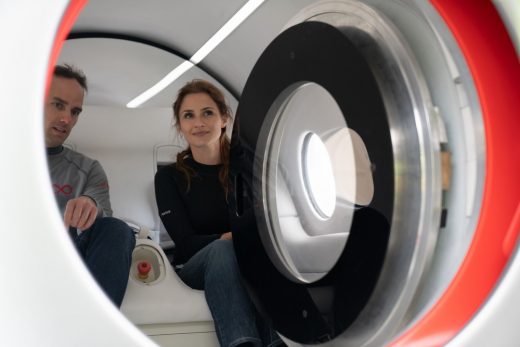
Since Hyperloop travel exists in a near airless tube, the need for aerodynamics becomes minimal, leading to a sleek design without the need for aerodynamic features. This environment makes the transportation system much more energy efficient than traditional rail transit. It’s engineered with magnetic levitation and avoids the drag of wheels, allowing for the maximum amount of speed to move the maximum number of passengers or cargo. Pegasus pods move individually as well, with a high arrival- and departure-rate allowing for on-demand travel.
“When designing the future of transportation and the slate is sort of blank, the opportunities are endless. We’ve needed to adjust our way of thinking away from the classic modes of transporting like trains, planes and metros, and towards a new vehicle typology, closest to that of a spaceship. Hyperloop allows passengers to get from A to B in a split second, and Pegasus provides the feeling of safety, convenience and a smooth journey.” Jakob Lange, Partner, BIG-Bjarke Ingels Group.
The front ‘scoops’ of the vessel create natural steps for comfortable entry and egress, and apertures on the sides of the fairing as well as the front door contain a forward-facing window for outward viewing down the tunnel. Altogether, these features create a link to Pegasus’ external design, where repeating soft forms and pill shape cut-outs are used to highlight depth, layers and entryways. Inside, the seating elements and extended arms serve multiple functions including as an entry and egress aid, and as storage for safety equipment, oxygen throughput and lighting. The seats can also be quickly assembled and disassembled for rear equipment access.
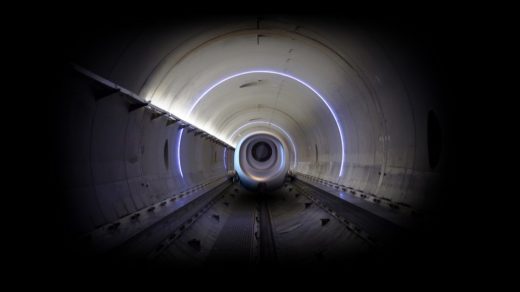
image by BIG Bjarke Ingels Group
Having undergone a rigorous and exhaustive safety process, Pegasus demonstrates many of the safety-critical systems that will be found on a commercial Hyperloop system and is equipped with a state-of-the-art control system that can detect off-nominal states and rapidly trigger appropriate emergency responses. The 6m2 interior is custom-built with occupant safety and comfort in mind, with the necessary safety equipment and controls built into the furniture.
This announcement follows significant momentum on the regulatory front, when last month, Virgin Hyperloop unveiled West Virginia as the location for the Hyperloop Certification Center (HCC), designed by BIG. The advancements at the HCC and the historic safety demonstration achieved with this test paves the way for the certification of Hyperloop systems around the world–the future of time and space, warped by Pegasus.
First Passengers: Virgin Hyperloop’s Josh Giegel and Sara Luchian:
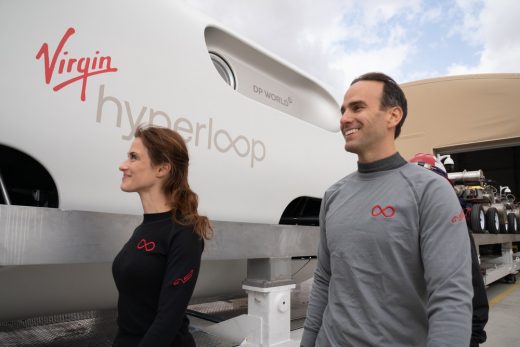
Pegasus is BIG’s second project on transportation announced this year, since Toyota Woven City was first unveiled in January as an urban incubator dedicated to the advancement of all aspects of mobility.
Tour Pegasus here: https://big.dk/#projects-pegasus
Virgin Hyperloop Pegasus Pod – Design Information
VIRGIN HYPERLOOP PEGASUS POD FACTS
Name: Virgin Hyperloop Pegasus
Type: Commission
Pegasus Pod Size: 12m2
Location: Test Site in Las Vegas, Nevada, USA
Client: Virgin Hyperloop
Collaborators: Kilo Design (Co-Designer), Aria Group (Fabrication and Engineering Support)
BIG – BJARKE INGELS GROUP
BIG-Bjarke Ingels Group is a Copenhagen, New York, London and Barcelona based group of architects, designers, urbanists, landscape professionals, interior and product designers, researchers and inventors. The office is currently involved in projects throughout Europe, America, Asia and the Middle East. BIG’s architecture emerges out of a careful analysis of how contemporary life constantly evolves and changes. By hitting the fertile overlap between pragmatic and utopia, we architects once again find the freedom to change the surface of our planet, to better fit contemporary life forms.
Partners-in-Charge: Bjarke Ingels, Jakob Lange
Project Leaders: Sören Grünert, Erik Berg Kreider
Team: BIG: Joshua Woo; Kilo: Lars Larsen, Philip Andersson, Laura Lebeau
Virgin Hyperloop Pegasus Pod, Nevada images / information received 101120 from BIG Architects
Location: Nevada, USA
9 Nov 2020
Virgin Hyperloop pod transport tests first passenger journey
Virgin Hyperloop has trialled its first ever journey with passengers, in the desert of Nevada, USA, repots the BBC today
The futuristic transport concept involves pods inside vacuum tubes carrying passengers at high speeds.
In the trial, two passengers travelled the length of a 500m test track in 15 seconds, reaching 107mph (172km/h).
Virgin Hyperloop pod transport tests first passenger journey
Hyperloop Designs
HyperloopTT Transportation
Design: MAD Architects, China

image : MIR
HyperloopTT Transportation
Hardt Hyperloop: Amsterdam to Frankfurt
Design: UNStudio, Architects
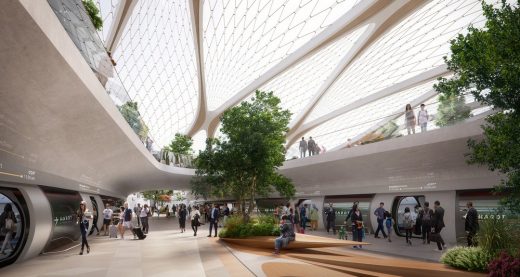
image © Plompmozes
Hardt Hyperloop
Hyperloop Pods and Portals
Design: BIG-Bjarke Ingels Group
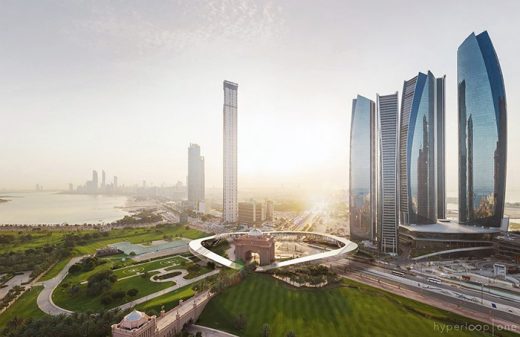
image from architects
Hyperloop Pods and Portals in Dubai
Design unveiled by BIG Architects for autonomous
Northern Arc – Hyperloop One Global Challenge
Design: Ryder / Arup
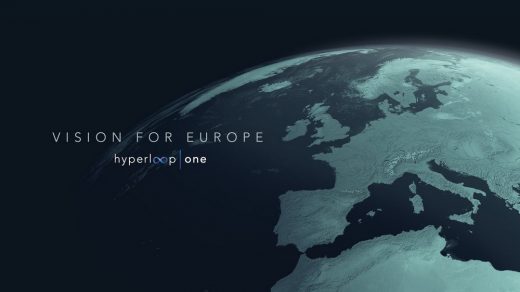
image courtesy of architects
Hyperloop One Global Challenge
Hyperloop Suburb by Louise Braverman, Venice
Hyperloop Suburb Venice
Nevada Buildings
Contemporary Nevada Building Designs
Skyspace Residence in Las Vegas
Architect: Marmol Radziner ; Artist: James Turrell

photo : The Ivan Sher Group
Skyspace Residence Nevada
Architect: assemblageSTUDIO
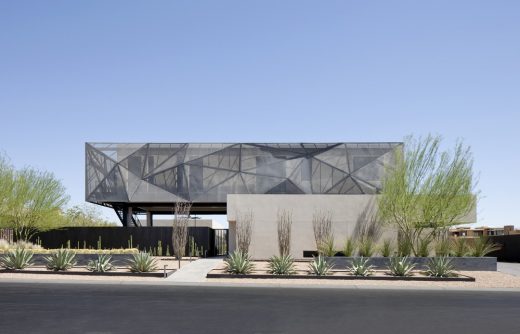
photographers : Bill Timmerman, Zack Hussain
Tresarca Residence in Las Vegas
J2 Residence, Summerlin, western Las Vegas
Architect: assemblageSTUDIO
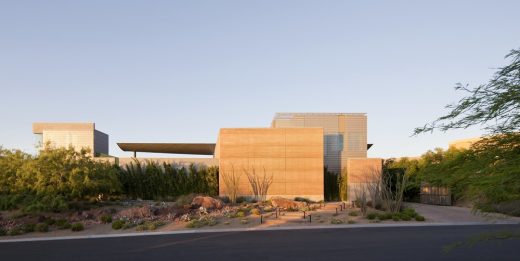
photographer : Bill Timmerman
J2 Residence in Las Vegas
New Las Vegas Architecture
Contemporary Las Vegas Architectural Selection
Las Vegas Building Developments – chronological list
Comments / photos for the Virgin Hyperloop Pegasus Pod, Nevada Architecture page welcome

